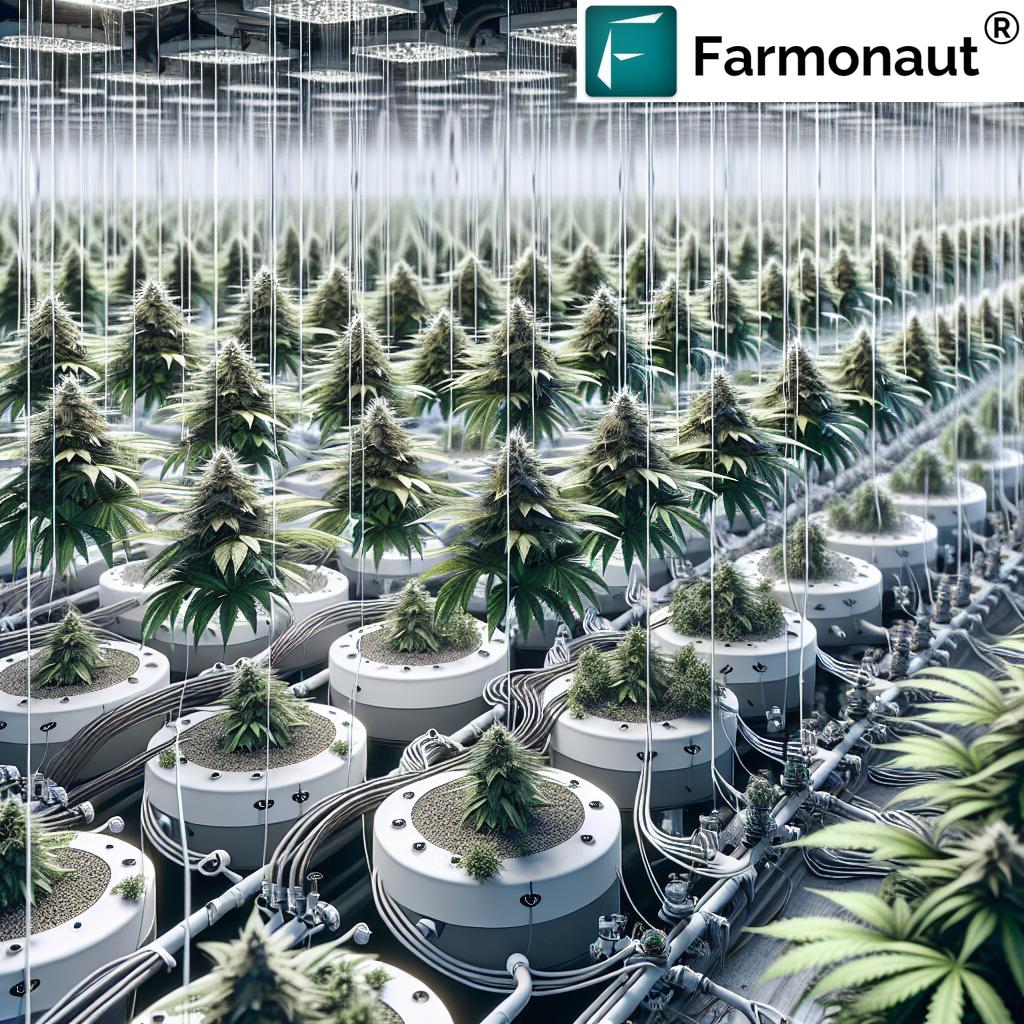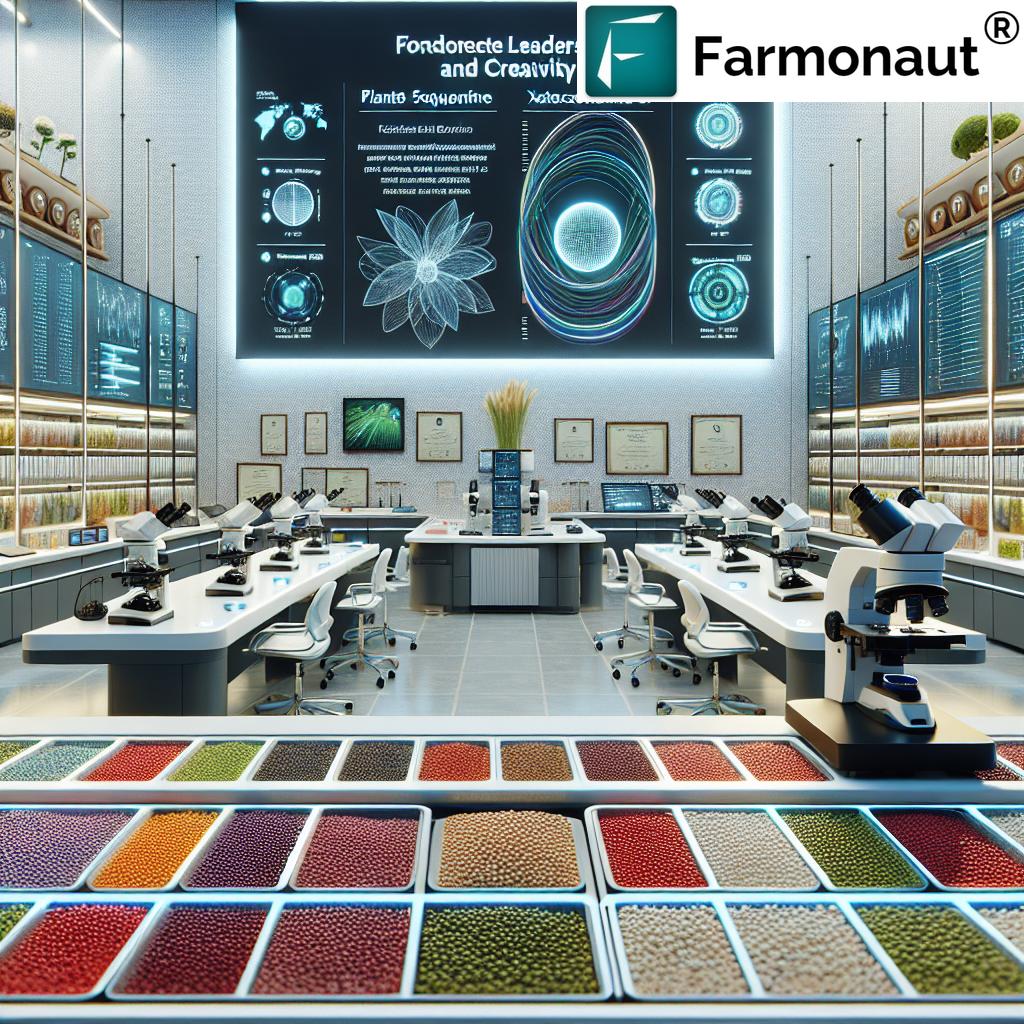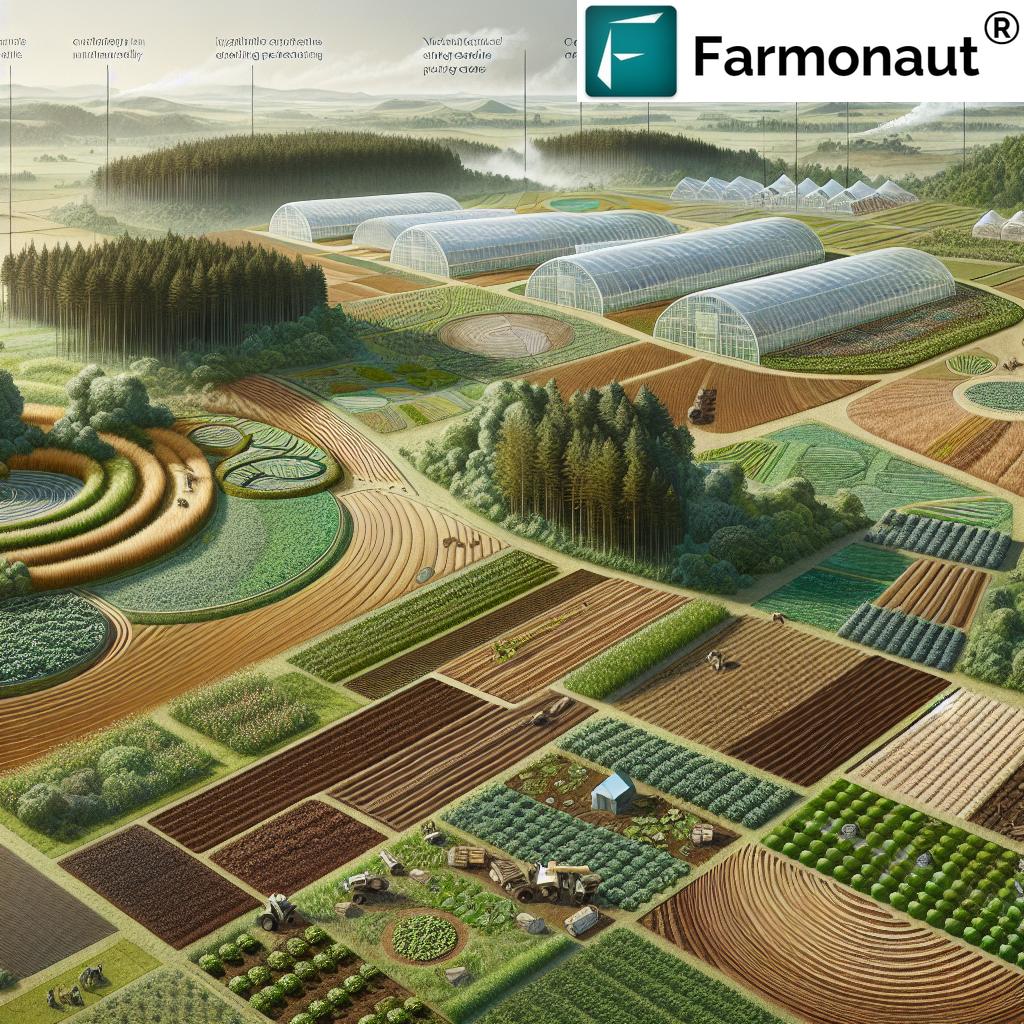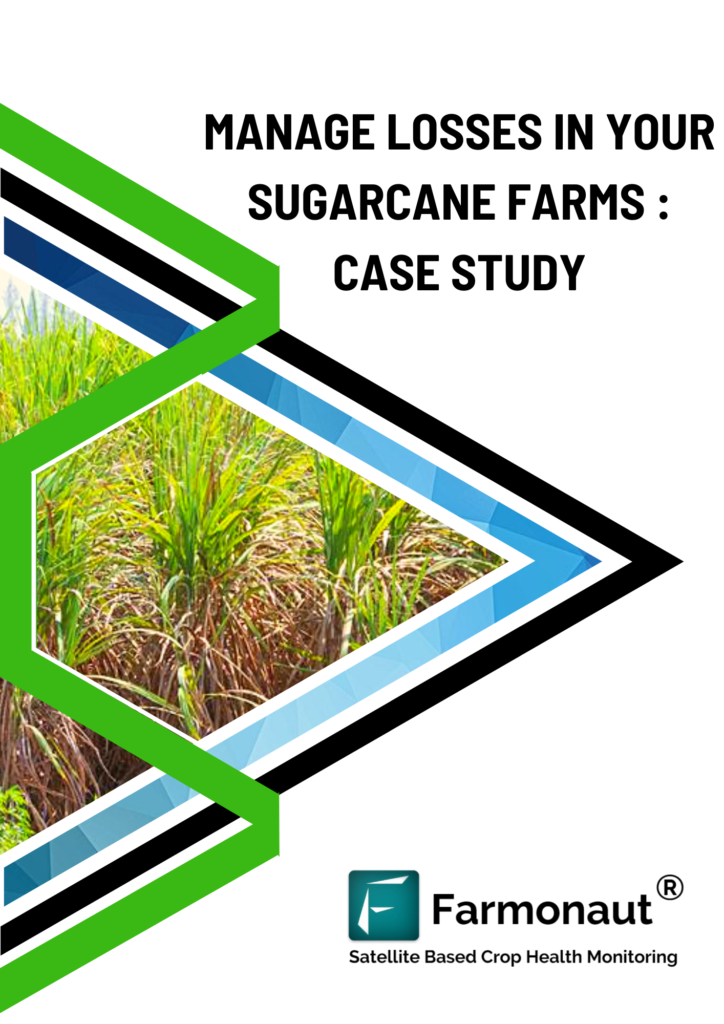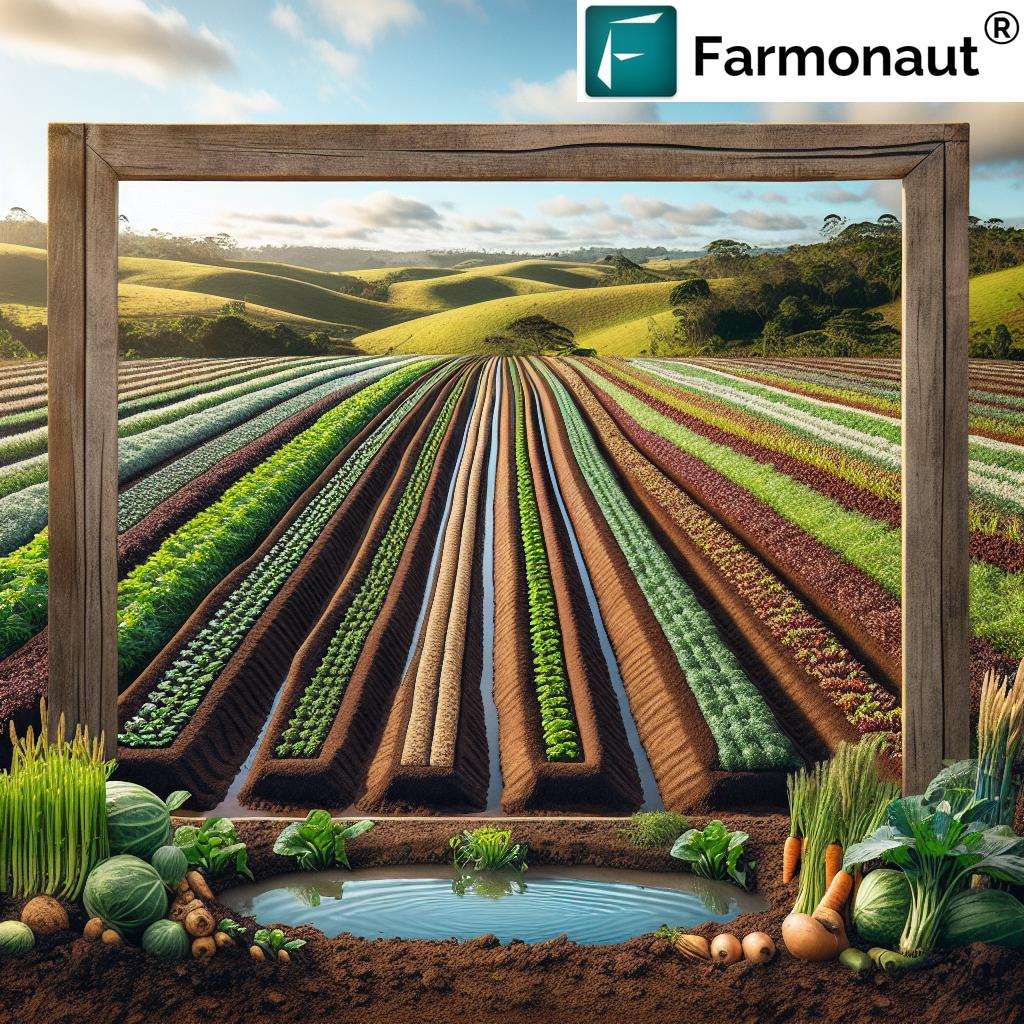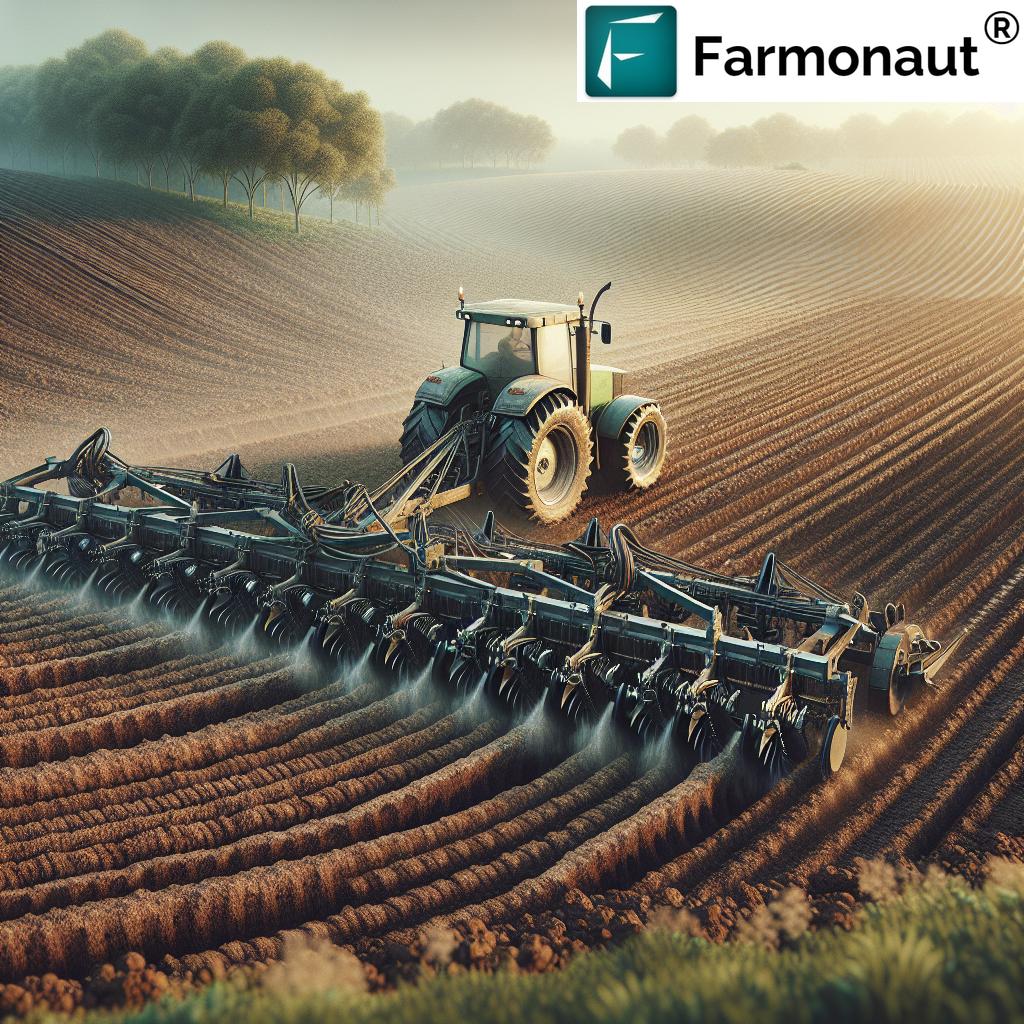Cannabis Cultivation Management: 7 Game-Changing Hacks for Yield & Sustainability
“Sustainable cannabis cultivation can reduce water usage by up to 50% compared to traditional methods.”
Table of Contents
- Cannabis Cultivation Management: An Overview
- 1. Environmental Considerations & Water Management
- 2. Game-Changing Climate Control Techniques
- 3. Advanced Cultivation Techniques: Soil, Hydroponics & More
- 4. Optimal Lighting Solutions for High-Quality Yields
- 5. Integrated Pest Management: Sustainable Cannabis Protection
- 6. Technology Integration in Cannabis Cultivation Management
- 7. Sustainable Practices: Organic & Regenerative Agriculture Cannabis
- Comparison Table: Sustainable Cultivation Hacks & Their Environmental Impact
- How Farmonaut Empowers Cannabis Cultivation Management
- Useful Tools and Download Links
- FAQs on Cannabis Cultivation Management
- Conclusion: Optimizing Cannabis Cultivation for Efficiency & Sustainability
Cannabis Cultivation Management: An Overview
As global attitudes shift and legalization progresses, cannabis cultivation has evolved from clandestine operations to a multifaceted discipline rooted in both traditional and cutting-edge approaches. Cannabis cultivation management now marries sustainable techniques, advanced environmental controls, and data-driven technologies to optimize plant growth, deliver high-quality yields, and reduce ecological footprint.
In our journey through the seven game-changing hacks, we’ll shed light on sustainable cannabis farming techniques, environmental considerations, integrated pest management cannabis approaches, modern water and climate systems, and the integration of leading agtech—including Farmonaut’s advanced satellite-based solutions.
By understanding and adopting these principles, we as growers, farm managers, and stakeholders can enhance productivity, ensure compliance, and promote true sustainability in the rapidly expanding cannabis market.
1. Environmental Considerations & Water Management
Water Management in Cannabis Cultivation
Effective cannabis cultivation management begins with a thorough understanding of the environmental factors influencing plant health and productivity. Among these, cannabis water management stands out as a crucial determinant.
The water consumption rates of cannabis are significant—an actively growing crop can require up to 22.7 liters (6 gallons) per plant per day, much higher than many other crops. Over the entire season, this can equate to thousands of liters per hectare. Traditional flood irrigation wastes precious resources through runoff and evaporation, emphasizing the need for more sustainable solutions.
- Drip Irrigation Systems: These systems deliver water directly to the plant’s roots, minimizing evaporation and runoff. Installation involves lines of drip tape or tubing that release water at a measured rate, coupled with timers and sensors to automate scheduling. This precise approach can reduce water usage by up to 50%, as observed in sustainable cannabis farming techniques.
- Rainwater Harvesting: Collecting and storing rainwater in tanks or ponds for irrigation is another way to conserve resources. This practice not only provides a free source of high-quality water but also prevents stormwater runoff, curbing erosion and nutrient leaching.
- Soil Moisture Monitoring: Knowing when and how much to irrigate is key. Sensors embedded at multiple soil depths can provide real-time data, helping us schedule irrigation only when the plants need it most.
Advanced platforms like Farmonaut, leveraging satellite-based crop health monitoring, can inform us of soil moisture levels and alert us to potential drought stress—helping reduce water consumption and supporting sustainable cannabis cultivation management.
Managing Environmental Factors for Growth
- Temperature: Ideal temperatures for cannabis growth lie between 24°C–30°C (75°F–86°F). Exceeding these can slow photosynthesis, affecting yields.
- Humidity Levels: Cannabis requires variable humidity throughout its lifecycle—start high during germination and reduce as plants mature to prevent mold and mildew. Automated sensors and controls ensure these levels remain within the optimal zone, supporting healthy growth.
- Airflow: Good air circulation is vital, discouraging mold and mildew that can devastate crops. Modern climate control systems often employ variable-speed fans and programmable vents.
In summary, adopting effective water management, temperature, humidity, and airflow control not only boosts plant health and yields but preserves essential resources for the long term.
2. Game-Changing Climate Control Techniques
Climate Control for Cannabis Cultivation Success
Cannabis climate control means creating and maintaining an environment that optimizes plant growth and minimizes risks from pathogens or environmental stressors. Modern grow facilities—whether indoor, greenhouse, or hybrid—benefit from automated, integrated systems that monitor and adjust environmental parameters.
- HVAC Systems: Advanced heating, ventilation, and air conditioning units maintain precise temperature and humidity levels, even across large spaces. Many systems are now designed for energy efficiency, reducing operational costs and ecological footprint.
- Dehumidifiers & Humidifiers: Essential for keeping humidity in the target range according to plant stage. Improper humidity can lead to common problems such as gray mold or powdery mildew.
- CO2 Injection: Supplementing carbon dioxide at the canopy level can increase photosynthetic rates and boost yields by 20-30%. However, this requires careful monitoring to avoid toxicity.
- Light Deprivation & Day/Night Cycles: For greenhouse grows, blackout curtains and automated lighting enable precise photoperiod control, promoting desired flowering phases.
Moreover, integrating data from farm management systems like Farmonaut’s large-scale farm management tools can further refine climate responses based on ongoing satellite and sensor feedback.
3. Advanced Cultivation Techniques: Soil, Hydroponics & More
Soil vs. Cannabis Hydroponic Systems
Selecting the optimal growing medium greatly impacts plant health, nutrient uptake, and yields. Traditionally, soil has been the primary choice due to its natural buffering capacity and ability to support beneficial microbes. However, cannabis hydroponic systems are rapidly gaining popularity, especially for commercial and urban indoor grows.
- Soil: Organic matter, compost, and balanced nutrients support root development. When combined with no-till or regenerative agriculture cannabis techniques, soil health can be maintained season after season.
- Hydroponics: Plants are grown in inert media (like coco coir or rockwool) and receive precise amounts of nutrients through water. Hydroponic cannabis can grow 30–50% faster and yield more per plant thanks to controlled delivery; however, growers must vigilantly prevent over-fertilization, root rot, and disease outbreaks due to the absence of natural soil buffering.
By choosing the cultivation method that fits our resources and goals—and by constantly monitoring nutrient balances (using sensor and data analytics tools)—we can optimize for yield, plant health, and sustainability.
Nutrient Management & Feeding Schedules
- Macro-nutrients (N-P-K): Nitrogen, Phosphorus, and Potassium must be supplied in the right ratios throughout vegetative and flowering stages.
- Micro-nutrients: Trace elements like iron, magnesium, and zinc are essential for optimal plant health. Frequent testing and “tissue sampling” can guide adjustments.
- Organic Fertilizers: Compost tea, worm castings, bat guano, and other organic sources enrich soil without synthetic residues, supporting both yield and sustainability goals.
In hydroponics, precision feeding is achieved through automated dosing pumps and sensors, allowing us to dial in the exact EC (electrical conductivity) and pH for optimal root absorption.
4. Optimal Lighting Solutions for High-Quality Yields
Modern Lighting: HID vs. LED
Indoor cannabis farming demands substantial artificial lighting. Traditionally, high-intensity discharge (HID) lights such as metal halide (MH) and high-pressure sodium (HPS) have been staples in indoor grows.
However, modern LED lighting systems are transforming cannabis cultivation management by delivering:
- Lower energy costs: LEDs consume up to 50% less power than HID, shrinking the carbon footprint.
- Reduced heat: Less heat output means less energy required for cooling—critical for both plant health and electricity bills.
- Custom spectrum: LEDs can be programmed to provide plants with specific light wavelengths for each growth stage, enhancing yields and cannabinoid content.
- Longevity: Quality LEDs can last over 50,000 hours, reducing maintenance labor and costs.
By switching to LEDs and integrating automated dimming/timing (via IoT solutions), we create healthier, more sustainable growing environments while maximizing crop yield and quality.
Lighting Cycles & Automation
- Vegetative Stage: 18–20 hours of light/day. Higher blue spectrum light encourages leafy growth.
- Flowering Stage: 12 hours light/12 hours darkness. Red spectrum light supports optimal flower and cannabinoid production.
Automation technology ensures precise lighting cycles, enhancing crop consistency and simplifying management even in large-scale facilities.
Explore Farmonaut’s Crop Health API – for developers who want to integrate real-time crop monitoring and decision-support tools directly into their own systems.
Farmonaut API Developer Docs – detailed documentation for seamless integration.
5. Integrated Pest Management: Sustainable Cannabis Protection
“Integrated pest management in cannabis farms lowers chemical pesticide use by nearly 70%, protecting local ecosystems.”
Integrated Pest Management Cannabis (IPM Cannabis)
Cannabis pest management is integral to maintaining plant quality and maximizing yields. Rather than relying exclusively on chemical pesticides—which often harm beneficial insects and build resistance—many growers are shifting toward integrated pest management cannabis (IPM).
- Biological Control: Introducing beneficial insects such as ladybugs, predatory mites, and parasitic wasps to contain pest populations like spider mites, aphids, and whiteflies.
- Cultural & Physical Control: Practicing strict sanitation, rotating crops, removing infested plants, and using sticky traps or barriers to monitor and block pest movement.
- Organic Pesticides: When intervention is necessary, using neem oil, insecticidal soaps, or pyrethrin-based formulas—a safer and more sustainable alternative.
- Environmental Control: Adjusting temperature and humidity levels to make conditions unfavorable for pests and diseases such as powdery mildew and botrytis.
Advanced sensors and data analytics systems allow us to detect pest activity early, track population dynamics, and intervene before outbreaks escalate. Farmonaut’s AI-based advisory systems, for instance, help growers make science-backed decisions about crop insurance eligibility and risk in response to pest/disease damage.
Minimizing Chemical Input
- Threshold-based Intervention: Rather than spraying on a fixed schedule, we take action only when pest populations reach economic thresholds, reducing unnecessary pesticide use.
- Documentation & Compliance: Keeping detailed records supports compliance with legal residue limits and certifies crops for “organic cannabis cultivation.” Blockchain-based traceability, like that provided by Farmonaut Traceability Solutions, further enhances transparency.
This comprehensive approach not only minimizes pest-related crop loss but dramatically reduces chemical input—improving safety for workers, consumers, and the local ecosystem.
6. Technology Integration in Cannabis Cultivation Management
Harnessing Cannabis Automation Technology
The integration of technology into every stage of cannabis cultivation management has redefined productivity, resource efficiency, and traceability. Let’s explore the game-changing systems transforming our industry:
- Automated Planting, Pruning, and Harvesting: Robotics ensure seeds are distributed at uniform depth and spacing, mechanical pruners encourage optimal branching, and automated harvesters delicately remove mature flowers to maximize yield and quality.
- Climate and Water Control: IoT-enabled sensors automatically adjust ventilation, irrigation, temperature, and nutrient dosing—delivering custom environments for each plant or zone.
- Data Analytics and AI: Farmonaut’s real-time data feeds, computer vision tools, and AI-based advisories empower growers with actionable insights, boosting yields while minimizing waste.
- Supply Chain Blockchain: Secure traceability solutions guarantee that every stage, from cultivation to consumer, is transparent, preventing fraud and supporting certifications.
- Fleet and Resource Optimization: Efficient vehicle routing, proactive maintenance, and precise equipment usage reduce operational costs and environmental impact. Farmonaut’s Fleet Management Tools automate and simplify these logistics for large-scale operations.
All these technologies offer scalable solutions that can be tailored to individual farms, collectives, agribusinesses, or government stakeholders. The outcome: environmental sustainability, reduced costs, and maximized farm productivity.
Real-Time Crop Health Monitoring
- Satellite Imagery: Multispectral satellites (like those integrated by Farmonaut) can monitor vegetation health, indicate nutrient deficiencies, and flag early pest or disease outbreaks even in large, inaccessible fields.
- AI-Based Advisory: Personalized recommendations delivered straight to farm managers’ smartphones based on AI analysis of local weather, crop stage, satellite data, and recent observations.
This digital transformation vastly improves decision-making for sustainable cannabis cultivation management—keeping us ahead of issues that threaten both yields and the environment.
7. Sustainable Practices: Organic & Regenerative Agriculture Cannabis
Organic Cannabis Cultivation: Minimizing Synthetic Input
Organic cannabis cultivation replaces synthetic fertilizers and pesticides with natural substances and ecosystem-based approaches. The outcomes are clear: healthier soil, reduced water pollution, and improved crop resilience.
- Composting & Mulching: Recycling plant waste and organic matter returns nutrients to the soil and suppresses weed growth.
- Organic Fertilizers: Fish emulsion, bone meal, kelp, and similar amendments deliver needed nutrition without disrupting beneficial soil biology.
- Approved Crop Rotations: Alternating cannabis with cover crops such as clover or mustard improves soil fertility, prevents disease carryover, and boosts yields in following seasons.
Platforms like Farmonaut facilitate organic compliance through blockchain traceability tools and real-time monitoring of soil and crop health, ensuring only natural substances are applied.
Regenerative Agriculture Cannabis: Building for the Future
Regenerative agriculture cannabis systems move a step further by restoring soil health, increasing biodiversity, and even sequestering atmospheric carbon. This is achieved through:
- No-till farming: Minimizing disturbance protects soil structure, enhances moisture retention, and lets beneficial organisms thrive.
- Cover cropping: Growing diverse, non-cash crops between cannabis cycles shields the soil, fixes nitrogen, and outcompetes weeds.
- Agroforestry: Integrating trees and shrubs on farm edges to create beneficial microclimates, provide windbreaks, and support native wildlife.
- Livestock Integration: Thoughtful grazing cycles can fertilize and aerate the soil, closing nutrient and energy loops.
All of these practices are monitored and optimized in real time by Farmonaut’s carbon footprinting tools, which calculate the environmental savings and climate impact of your regenerative approaches.
Learn more about carbon footprint tracking and sustainability with Farmonaut.
Comparison Table: Sustainable Cultivation Hacks & Their Environmental Impact
| Hack Name | Sustainable Technique Used | Estimated Yield Improvement (%) | Climate Impact | Pest Mgmt. Effectiveness (1-5) | Resource Savings (%) | Implementation Complexity |
|---|---|---|---|---|---|---|
| Drip Irrigation & Rainwater Harvesting | Direct-to-root delivery, rainwater storage | +15% | Low | 3 | Water 40–50% | Easy to Moderate |
| Automated Climate Control | IoT HVAC, dehumidification | +18% | Medium | 3 | Energy 20–35% | Moderate |
| Hydroponic Cultivation | Water-based root systems | +35% | Medium | 3 | Water 25–30% | Hard |
| LED Lighting Systems | High-efficiency, spectrum control | +12% | Low | 3 | Energy 50% | Easy |
| Integrated Pest Management (IPM) | Biologicals, cultural & organic controls | +10% | Low | 5 | Chem. 70% | Moderate |
| Automation & Data Analytics | IoT, AI, predictive monitoring | +20% | Low | 4 | Water/Energy 15–25% | Moderate |
| Regenerative Organic Practices | No-till, cover crops, compost | +17% | Low | 4 | Varies by system | Moderate |
“Integrated pest management in cannabis farms lowers chemical pesticide use by nearly 70%, protecting local ecosystems.”
How Farmonaut Empowers Cannabis Cultivation Management
As cannabis cultivation management becomes increasingly complex, technology plays a bigger role in simplifying processes, optimizing resources, and promoting sustainability. Farmonaut provides affordable, accessible, and powerful tools for cannabis growers, collectives, and agribusinesses globally:
- Satellite-Based Crop Health Monitoring: Remotely track NDVI, soil moisture, vegetation stress, and more, enabling targeted interventions and efficient resource allocation.
- Real-Time Data & AI-Based Advisories (Jeevn AI): Receive instant climate, irrigation, and pest advisories tailored to your location and plant stage, increasing yields and reducing risks.
- Blockchain Product Traceability: Strengthen consumer trust and meet certification demands with immutable records of every step—from planting, through growing, to harvest, drying, and shipping.
- Fleet and Resource Management: Stay on top of all machinery, equipment, and logistics. Minimize downtime and fuel usage with optimized fleet management for cannabis production.
- Carbon Footprinting: Track, monitor, and reduce your environmental impact over time, verifying your operation’s trajectory towards true sustainability.
Learn more about these technologies and their impact on your cannabis operation at Farmonaut Carbon Footprinting, Product Traceability, and Fleet Management.
Useful Tools and Download Links
-
Farmonaut Web App – Manage and monitor your cannabis cultivation from your browser:

-
Farmonaut Android App – Monitor your crops on-the-go via smartphone:

-
Farmonaut iOS App – Precision farm management for Apple users:

- API Access: Farmonaut Satellite & Weather API
- API Documentation: API Developer Docs
For large plantations, governments, or agro-corporates looking to centrally administer hundreds or thousands of hectares, learn more about Farmonaut’s Large Scale Farm Management Features.
FAQ: Your Questions on Cannabis Cultivation Management Answered
What are the critical factors for successful cannabis cultivation management?
The success of cannabis cultivation hinges on maintaining optimal environmental conditions (water, temperature, humidity, airflow), effective pest and disease control, sustainable nutrient management, and the integration of appropriate technology (automation, monitoring, analytics). Leveraging real-time data and minimizing environmental impact are keys to long-term productivity.
How can we reduce water consumption in cannabis cultivation?
Drip irrigation, soil moisture sensors, precise scheduling, and rainwater harvesting can cut water use by up to 50%. Technologies like Farmonaut’s satellite monitoring systems further optimize irrigation by identifying stressed zones and helping us apply water exactly where needed.
What is the role of IPM in cannabis cultivation?
Integrated Pest Management (IPM) combines preventive cultural practices, biological controls, and organic pesticides—minimizing chemical usage by up to 70%. IPM protects the environment and enhances crop health.
How does technology improve cannabis yields and sustainability?
Automation streamlines repetitive tasks, sensors collect actionable field data, and AI platforms generate targeted recommendations. Together, these enable precision resource management, boost yields, and reduce waste—supporting both profitability and sustainability.
Are there software tools to help manage all aspects of cannabis cultivation?
Yes, platforms like Farmonaut offer web/mobile solutions for crop monitoring, pest management, irrigation, traceability, fleet logistics, and sustainability tracking with real-time satellite and AI insights.
How do organic and regenerative practices contribute to higher quality cannabis?
Organic and regenerative methods enhance soil health and resilience, producing robust plants with superior cannabinoid profiles and terpene content, while ensuring environmental stewardship.
Is Farmonaut a supplier of cannabis growing inputs or a regulatory body?
No, Farmonaut is not an input supplier or regulatory agency—it is an agri-technology company specializing in data-driven, satellite-based farm management tools for all types of crops, including cannabis.
Conclusion: Optimizing Cannabis Cultivation for Efficiency & Sustainability
Cannabis cultivation management is a dynamic discipline—one that must balance yield, quality, compliance, and sustainability. By embracing the seven game-changing hacks discussed above—spanning sustainable environmental practices, advanced cultivation and climate control, innovative pest solutions, and deep technology integration—growers can position themselves at the leading edge of the green revolution.
Farmonaut’s accessible, affordable, and insightful solutions empower individual growers and large-scale managers alike to meet modern demands for productivity and sustainability. Through real-time crop health monitoring, AI-powered decision tools, and blockchain-based traceability, we can optimize every harvest while protecting our environment for generations to come.
If you’re ready to make a sustainable leap in cannabis cultivation management, explore the Farmonaut platform today.



